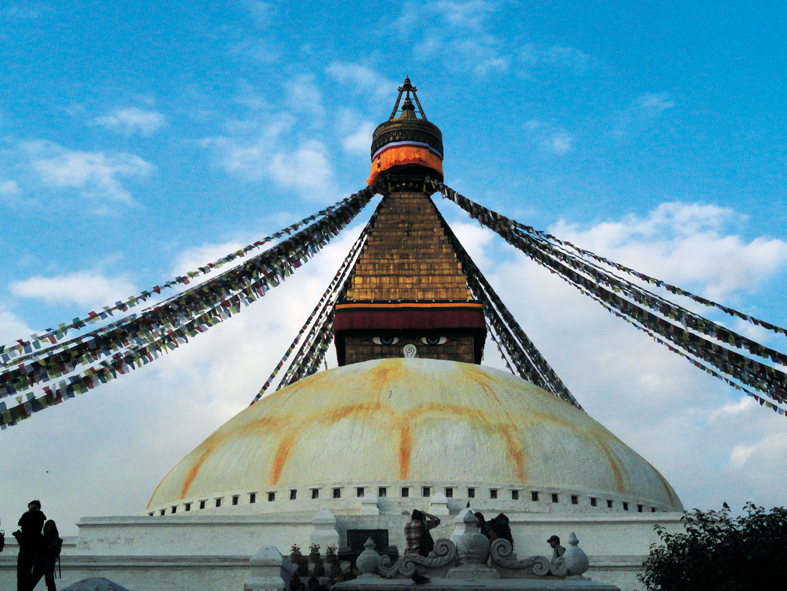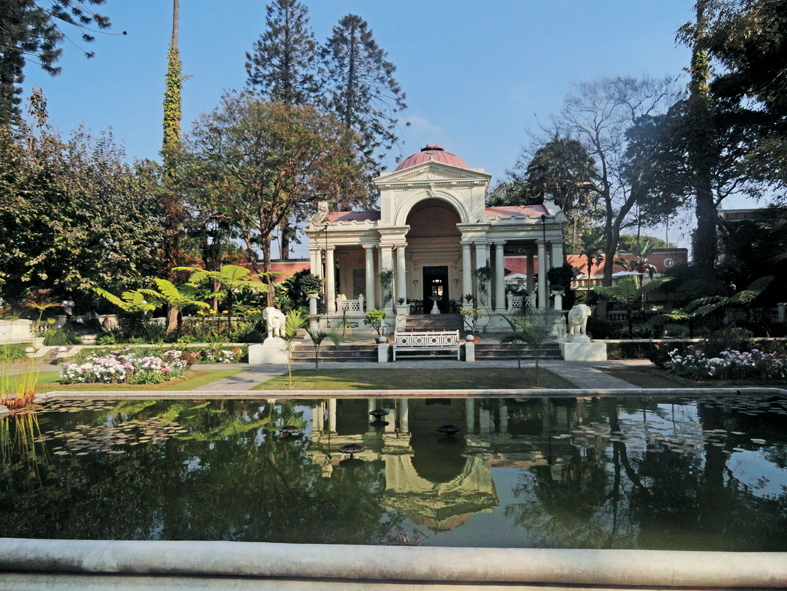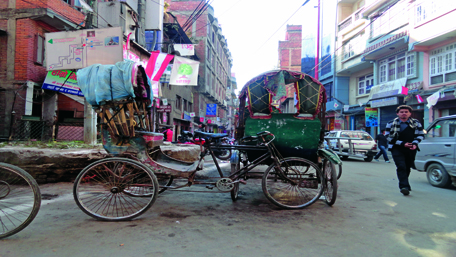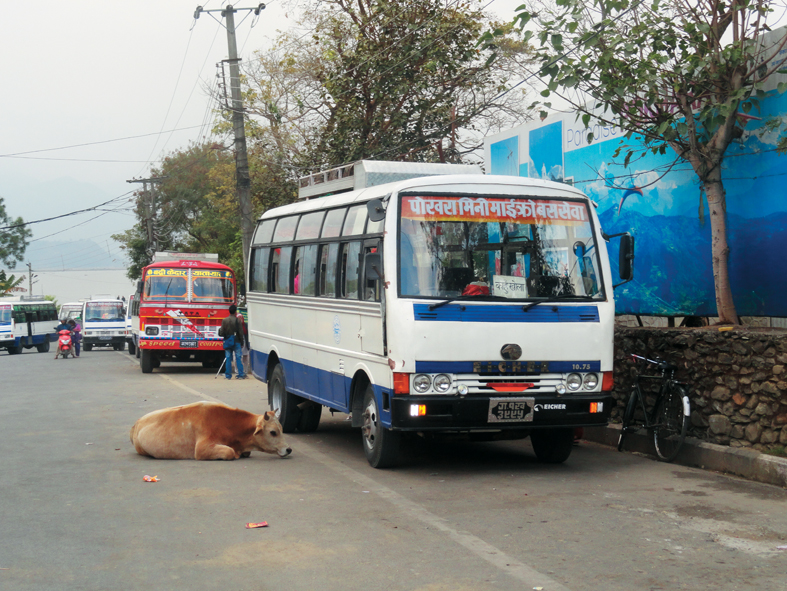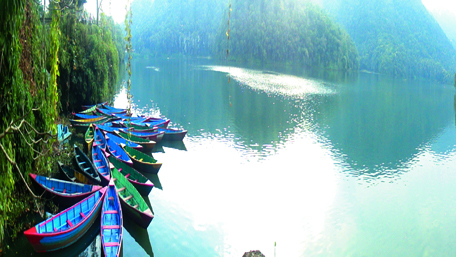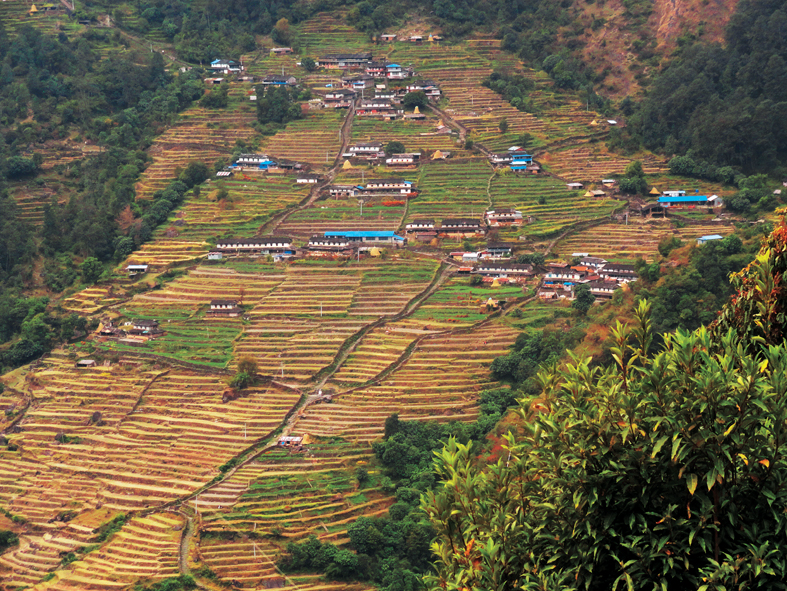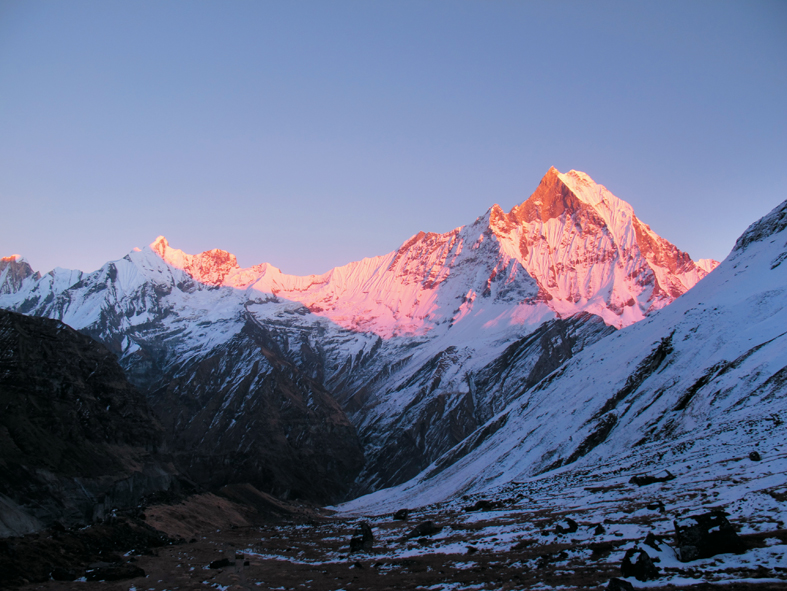
© Archives Romy Geahchan
Cradle of the world’s highest peaks, Nepal is a country apart, steeped in Buddhism and HinduismIt is through the timeless adventures of Tintin in Tibet that we all formerly knew Nepal. Located in Central Asia, landlocked in the Himalayas between China and India, the country continually draws lovers of mountains and trekking, since its opening to the outside world during the 50s. Multicultural country deeply rooted in its traditions, Nepal is a source of natural wonders, works of art and artistic, cultural and religious treasures. Driven by a sense of adventure, Romy Geahchan and four Lebanese friends have made an exciting exploration of this land of festivals, hospitality and traditions, experience that they wanted to share with Prestige.
Imposing Buddhist stupas from Kathmandu
Buddha plus nath, or temple, gives Boudhanath, one of the major Buddhist shrines in Kathmandu and one of 10 locations in Nepal, listed since 1979 on the World Heritage List of Unesco under the Kathmandu valley. The name means by extension the district of Kathmandu, located around the sanctuary 5 km northeast of the city center. Its stupa dating from the XVIth century, is one of the largest in the world and dominates the skyline. Its base consists of three terraces representing a giant mandala that the faithful can browse and only, Buddha in the past could admire from heaven, and 108 niches, each containing a statue of Buddha. The base represents the earth, the dome: water, the tower surmounting the dome: fire, the ring: air, and the pinnacle ether. While the base of the square tower is the harmika carrying the Buddha’s eyes, the upper part shaped as an elongated pyramid consists of 13 degrees representing the path to enlightenment.
© Archives Romy Geahchan
Prayer flags can be seen hanged from the stupa in Katmandu.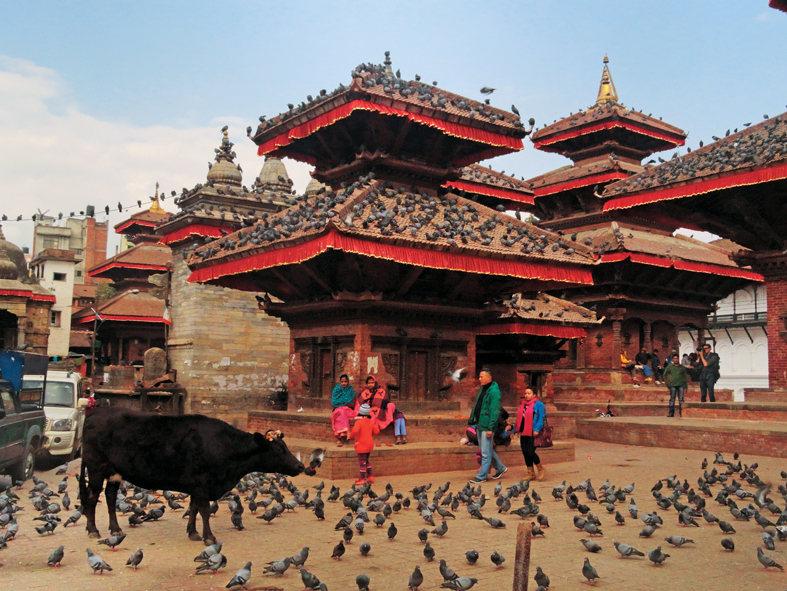
© Archives Romy Geahchan
Symbol of Katmandu, political and religious capital of the country, the Kaasthamandap or Maru Satal temple is located at Durbar square.The Swayambhunath Temple
Founded in the early fifth century, Swayambhunath is one of the oldest religious sites in Nepal. Built on a hill west of Kathmandu, the Buddhist temple most revered by both Buddhists and Hindus. Visible from afar because of its imposing stupa, it is also nicknamed “Monkey Temple” because a large tribe of monkeys considered sacred, lived there. The dome at the base of the stupa, wearing a cubic or harmika structure, adorned with a pair of eyes of Buddha looking in all four directions. They represent Wisdom and Compassion, while a third eye, called “inner eye” or “eye of the soul” is a metaphor for mystical beyond the physical eyes, the third eye, the eye of Knowledge . Each side of the stupa has a chapel dedicated to Panch Buddhas or five Buddhas.
© Archives Romy Geahchan
Garden of Dreams of historic neoclassical style.
© Archives Romy Geahchan
Thamel, the tourist district of Kathmandu and the center of the capital, covers a wide range of shops, exchange offices, pubs, restaurants and guesthouses.Serenity and magic in Pokhara,
in central Nepal
Preparations for trekking and reservations are completed in Kathmandu by specialized agencies that handle reservations internal airline tickets to Pokhara, the starting point of the trek, via an internal flight of Buddha Air. At about 850m above sea level in the valley of the same name, Pokhara, at 198km west of Kathmandu, is the second largest city of Nepal, discovered by the hippies. With a population of 255,500 inhabitants, Pokhara is one of the most popular and closest tourist destinations of Annapurna, the tenth highest mountain in the world to 8.091m and 8.000m first summit to be climbed. It has one of the highest rates in the country of precipitation, with more than 4,000 mm per year. North at an altitude of about 1000m, the outskirts of the city touch the base of the Annapurna range which contains six main high peaks over 7,200m.
© Archives Romy Geahchan
Pokhara This is where the adventure begins. Buses, most of which are yellow and red, colors of Buddhism, are frequent and inexpensive.Phewa Tal or Phewa lake,
south of Pokhara
At 800m above sea level in the south, Pokhara is bordered by Phewa lake, with an area of4.4 km2. Dominated by Annapurna, the lake makes the place a place of charm and idyllic rest before or after a trek. A walk in one of the colorful boats is pure bliss. Note that there are no other places in Nepal where mountains rise so quickly. On less than 30 km, the altitude rises rapidly from 1.000m to over 7.500m. The mountains that dominate the northern horizon of the city are a source of contemplation and admiration for tourists and locals.
© Archives Romy Geahchan
Colorful boats awaiting tourists and walkers on the lake.Admire in beauty the top of the world!
Natural scenic beauty, cultural discovery, personal satisfaction and Nepalese hospitality make the trek to Annapurna a sacred intoxicating and magical mixture, and one of the most memorable in the world. Nepal is indeed the land of the great treks.Synonym of walk, trekking means attacking the Annapurna range, which rises to over 8,000 m and visible from Pokhara. The adventure lasts six days and a half, four days of ascent and two and a half days of descent. An unforgettable experience …
The adventure consists to walk about 6-7 hours a day, moving from village to village. A variety of landscapes is offered to the view: rice fields, banana plantations, jungle, orchards … On arrival at the village, lunch break, break and even hosting the night in a lodge owned by local residents. The experience is rewarding at all levels, physical, psychological and cultural. The fact to cross and rise during long hours of endless stairs is a physical and mental challenge. Forget physical harm to focus only on breathing and heart rate due to oxygen depletion that lacks in altitude is a real challenge. Despite the very unfavorable weather and hygienic conditions, and to stay in shape, there had to be solely one objective: reaching the majestic mountain. On arrival at the base camp at an altitude of 4.130m, the feeling is indescribable. A total euphoria emerges to discover the impressive panoramic view of the highest mountain, almost touching the sky.
© Archives Romy Geahchan
Trekking trip to Annapurna Base Camp is “an emotional lift,” a great challenge.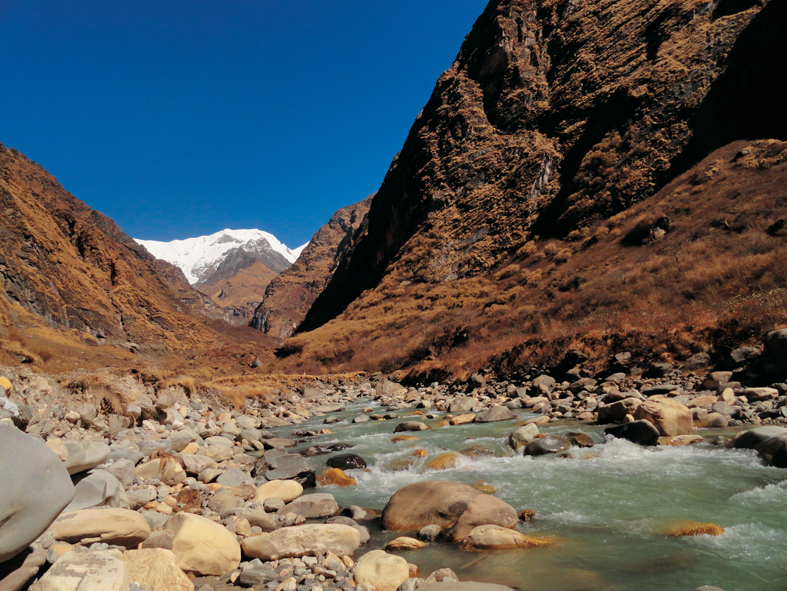
© Archives Romy Geahchan
While Kachan Kalan is the lowest point of Nepal at 70m above the sea, Annapurna reaches a height of 8,091m.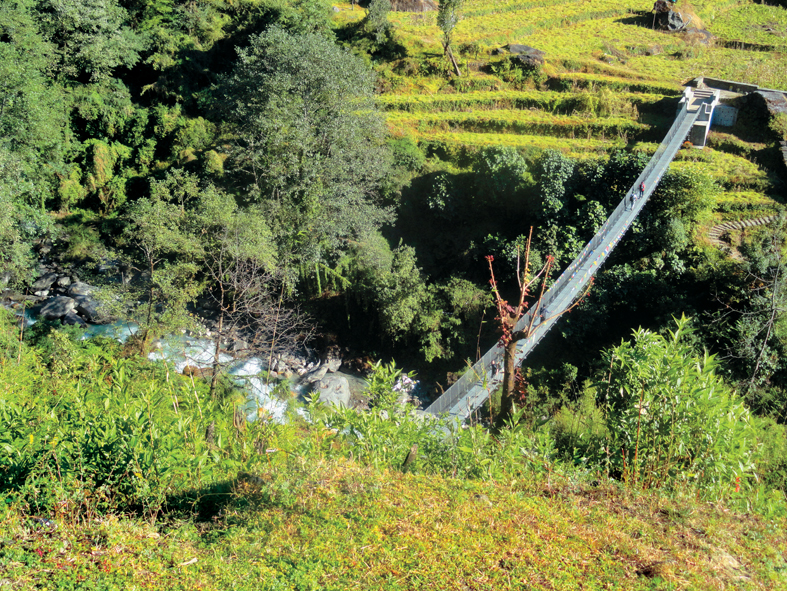
© Archives Romy Geahchan
The itinerary is punctuated by walks on foot, colorful prayer mills and bridges suspended in the manner of an Indiana Jones film.


